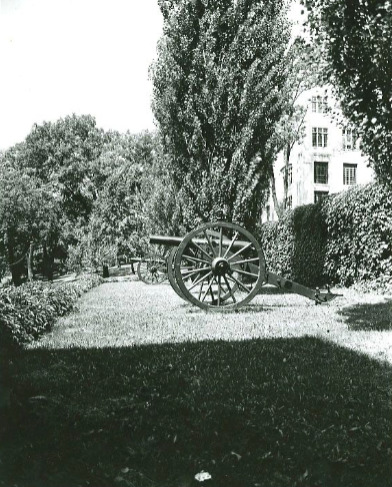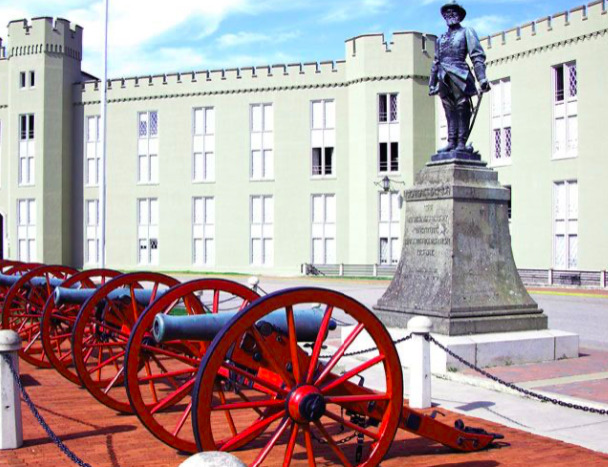1848 Cadet Battery
Item
- Legacies Classification
- Memorial Type
- Memorial Context
- Memorialized Subject
- Title
- Background and Context
- Physical Description
- Creator/Participating Person(s)
- Date created, installed or dedicated
- Historical Period
- Location: Institution, City, State
- Learn More About this Subject
-
Memorial Object
-
Object
-
Four cannons used by the Confederate army during the Civil War, as well as the Corps of Cadets for training and ceremonial purposes from 1848 to 1970.
-
1848 Cadet Battery
-
The 1848 Cadet Battery was originally used by the VMI Corps of Cadets for training purposes before the Civil War. Professor and instructor of artillery Thomas J. Jackson used the cannon for this purpose during his tenure at VMI.
When the Civil War, the cannons were commandeered by the 1st Rockbridge Artillery of the Confederate Army. Nicknamed Mathew, Mark, Luke, and John after the four Gospels of the Bible, these artillery pieces saw action at the battles of Falling Water, First Manassas, Savage Station, and Malvern Hill. In 1864, the Union Army captured the cannons and transported them to Washington D.C. After the war, however, they were returned to VMI, where they were used until the 1970s for parades and ceremonies. They were regularly featured as props in Lost Cause ceremonies, including one on May 10, 1913, to mark the fiftieth anniversary of Stonewall Jackson's death.
The battery sat at several spots on post before being placed at the edge of the parade ground in recent decades, where they remain today. Until 2020, the battery sat adjacent to a statue of Stonewall Jackson, a placement that commemorated Jackson’s roles VMI and the Confederate army. Considering Jackson's status as an icon of the Lost Cause, it can be argued that the battery's postwar placement and function were in part intended to further the Lost Cause narrative. Accordingly, as public view has shifted towards resentment of Confederate memorials in recent years, the Jackson statue was removed from VMI in December 2020. Today, the cannons stand alone on the parade deck in front of Old Barracks.
-
With a weight of 562 pounds each, these six-pounders were three hundred pounds less than the typical six-pounder gun of the day. This was due to their custom design, made specially for the VMI Cadet Battery in order to make them easily mobile in the mountainous terrain of Lexington, Virginia. The wooden carriages were originally painted red and black, immediately identifying them as part of the VMI Cadet Battery; in the 20th century, the original carriages were replaced with aluminum.
-
Alger, Cyrus
-
1848
Position: 877 (7 views)





